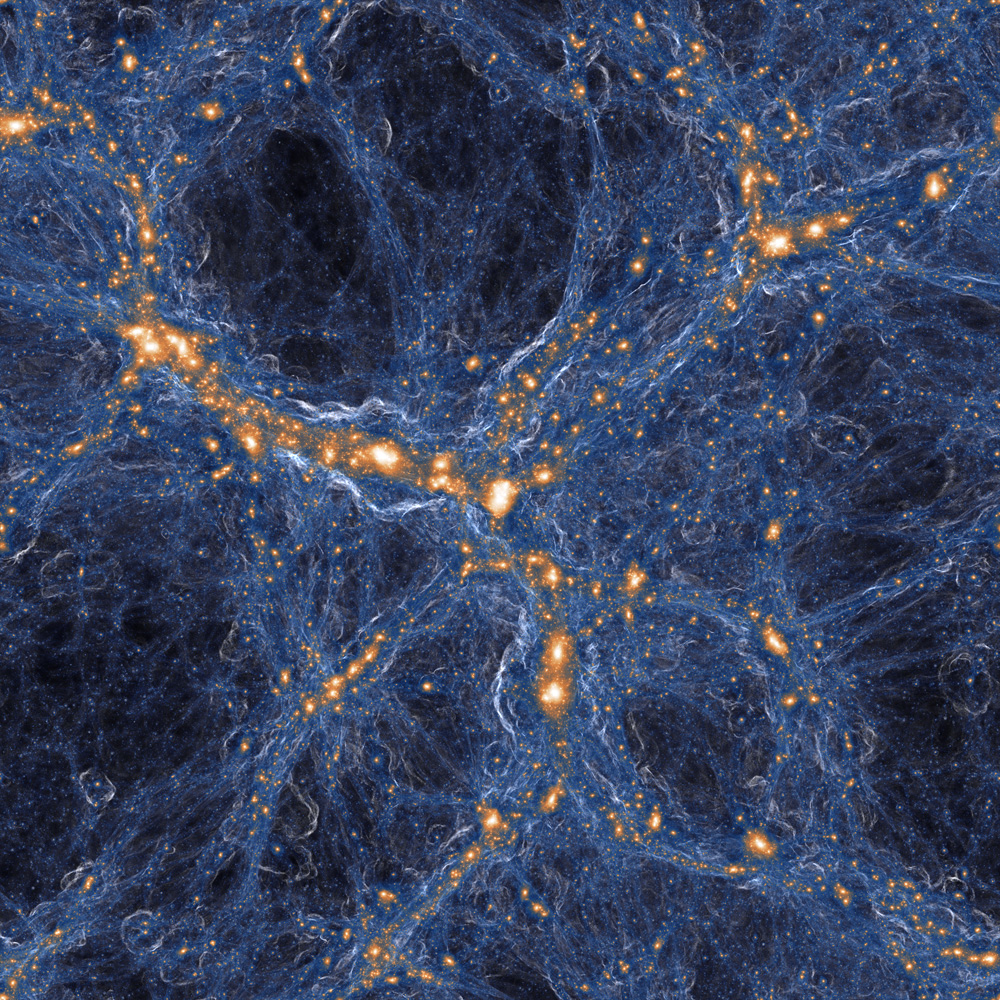Turning Back Time on Space
Today, the Universe is a patchwork of galaxies separated by large swaths of empty space, but it wasn’t always that way. Back in its early days, before galaxies came into being, matter was more evenly spread across the Universe, shrouding it as a blanket does a newly made bed.
But this matter blanket, like even the most meticulously laid out duvet, had tiny wrinkles in the form of density fluctuations. Over time these wrinkles got amplified as gravity attracted more and more matter to the slightly denser regions. Researchers can observationally measure the pattern of initial wrinkles from something called the cosmic microwave background (CMB), and they can see the outcome by observing the Universe today, but what exactly happened in between remains somewhat of a mystery. Now Sebastian von Hausegger of the University of Oxford, UK, and colleagues have developed a method for predicting an earlier matter distribution from a later one [1]. The method could give astrophysicists the power to rewind the clock to any point in the Universe’s history, allowing them to better understand how galaxies evolved.
The transformation of the Universe from matter blanket to galaxy patchwork was not a smooth one. Initially, the amplification of the wrinkles proceeded placidly, with the wrinkles getting taller (denser) while the overall pattern stayed roughly the same. At a certain point, however, the denser regions became so dense that they suddenly contracted under their own gravitational pull. This process has caused a blurring of the initial wrinkle pattern.
Today the initial wrinkle pattern is extremely difficult to tease out from the positions of galaxies. Instead, astronomers infer it from the CMB, which gives an imprint of the matter distribution when the Universe was around 380,000 years old. But the CMB tells only part of the story, so von Hausegger and his colleagues chose another route for extracting the initial wrinkle pattern. “By starting from today and moving the galaxies back in time, we can undo the washing out and the distortions, such that we can precisely reconstruct the [Universe’s] initial density field and get a better view of what it looked like,” von Hausegger says.
For their method, von Hausegger and colleagues turned to an idea from mathematics called optimal transport theory. This theory is used to calculate the most efficient way to move things from one place to another. Originally devised in the eighteenth century for optimally excavating and removing soil from construction sites, the theory has since been applied to problems ranging from restoring images to finding hidden patterns in human tissues (see Viewpoint: Excavating Topology to Find Structure). Large-scale computations using the theory are known to be time consuming, but recent advances in computer science—in particular, a shortcut devised by one of von Hausegger’s colleagues—have allowed optimal transport theory to be much more efficiently implemented on computers.
For their demonstration, the team used a computer simulation of the Universe that reproduces the time evolution of large-scale features in the matter distribution. They selected a late-time snapshot from that simulation, representing today’s Universe. They then put that simulated snapshot into their algorithm and ran it backward to predict what that simulated Universe looked like in its earliest days. The team then compared the predicted early-time matter distribution to an early-time snapshot from the simulation. “We are basically playing a game where we pretend that we didn’t know how things looked at the early times,” von Hausegger says.
To make their comparison, the team extracted from the predicted and simulated snapshots a feeble, but well-defined, set of density wiggles called the baryonic acoustic oscillations (BAO). The prominent length scale of these wiggles can be calculated from cosmological models (see Synopsis: Cosmic Ruler Measured More Directly), making it a “good benchmark” for a test, von Hausegger says. For both images, they found the same value to a high degree of accuracy, indicating that their method worked.
The reconstruction of the BAO feature has been done with “unprecedented precision,” says Ravi Sheth, an astrophysicist at the University of Pennsylvania. Sheth is currently working with the other two researchers of this study—Bruno Lévy of the University of Lorraine and Roya Mohayee of the Paris Institute of Astrophysics, both in France—on the next steps for the method. Sheth says that the nice thing about this work is that it uses simple assumptions that everyone agrees with.
The team are now adapting the code behind their method so that it can work with the actual Universe, rather than a simulated one. “The idea of course is to use real data—that is absolutely the next step,” von Hausegger says.
–Katherine Wright
Katherine Wright is the Deputy Editor of Physics Magazine.
References
- S. von Hausegger et al., “Accurate baryon acoustic oscillations reconstruction via semidiscrete optimal transport,” Phys. Rev. Lett. 128, 201302 (2022).





